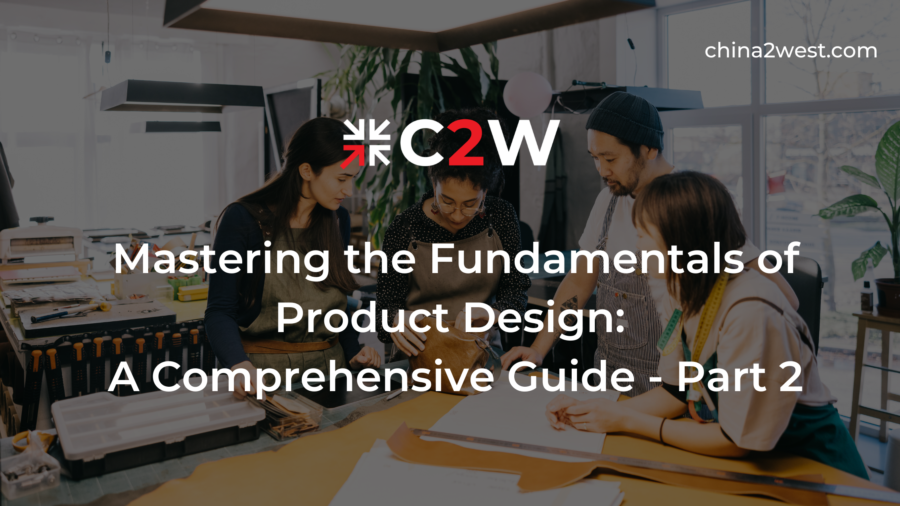As we continue our journey into mastering product design fundamentals, this second part unveils advanced strategies crucial for creating exceptional products.
From usability and sustainability to emotional design, intellectual property, and market research, these aspects elevate your design prowess.
Let’s delve into the intricacies that make products truly innovative.
Aesthetics and Visual Design: The Power of Attraction
The visual appeal of a product is a pivotal factor in its success. Focus on:
Visual Appeal
Strive to create products that not only fulfill their functional purpose but also captivate users through their visual appeal. Your product should resonate with your brand’s identity while delivering a compelling aesthetic experience.
The initial visual impression can significantly influence a user’s perception of your product.
Design Principles
Apply established design principles, such as balance, contrast, hierarchy, and color theory, to create visually pleasing and harmonious product designs. These principles guide you in crafting a cohesive and engaging visual experience for users.
Usability and User Interface (UI) Design: The Key to User Satisfaction
An intuitive user interface is essential for a positive user experience. Consider:
Information Architecture
Optimize the organization and structure of information within your product. An efficient information architecture enhances user navigation and access to critical features, ultimately improving the user experience.
Usability Testing
Conduct usability testing to refine your designs based on user feedback. This empirical approach allows you to identify pain points, uncover issues, and validate your design decisions based on real user interactions. Iterative testing and refinement lead to a more user-friendly product.
Sustainability Considerations: Building for a Better Future
In today’s environmentally conscious world, sustainable design is paramount. Consider:
Reducing Environmental Impact
Focus on reducing the environmental impact of your product by considering factors such as recyclability, energy efficiency, and responsible sourcing of materials. A sustainable product not only contributes to a better planet but also appeals to eco-conscious consumers.
Product Life Cycle
Address the entire product life cycle, from production to disposal. Sustainable design extends beyond the product’s usage phase; it encompasses the environmental impact across all stages, including manufacturing, distribution, and end-of-life disposal.
Emotional Design Techniques: Creating Lasting Impressions
Consider the emotional impact of your product on users:
Emotional Connection
Strive to create products that evoke positive emotions and a sense of delight in users. By crafting experiences that resonate emotionally, your product can build lasting connections with users, fostering loyalty and word-of-mouth recommendations.
Attention to Details
Pay meticulous attention to the finer details that enhance the user’s emotional connection to the product. Small design elements, thoughtful features, and a deep understanding of user needs can collectively create a memorable user experience.
Intellectual Property and Legal Considerations: Protecting Your Innovation
Ensure that your product design complies with legal requirements:
Intellectual Property
Be aware of intellectual property rights, including patents and trademarks. Protecting your intellectual property is essential to safeguard your innovative ideas and creations from unauthorized use.
Avoiding Infringement
Ensure your design does not infringe on existing patents or copyrights. Thoroughly research and analyze existing patents to avoid any legal conflicts. Intellectual property laws are vital for protecting your design from being copied or imitated without your permission.
Market Research for Product Design: Navigating the Competitive Landscape
Understand the market and competition:
Market Analysis
Analyze market trends and competitive products to make informed design decisions. A thorough market analysis provides insights into customer needs, emerging trends, and the competitive landscape. By staying updated on market dynamics, you can position your product effectively.
Target Audience
Gain a deep understanding of your target audience’s preferences, demographics, and behavior. Tailor your product design to cater to your specific audience, ensuring that it aligns with their expectations and addresses their pain points.
In this two-part series, we’ve embarked on a comprehensive exploration of the intricate world of product design. These fundamental and advanced techniques provide the pillars for navigating the complexities of the design landscape, enabling designers to craft solutions that captivate, serve, and inspire users in today’s competitive market.
As you apply these principles in your own design endeavors, remember that innovation knows no bounds. Stay curious, stay creative, and continue to push the boundaries of what’s possible in the dynamic realm of product design. If it is a new business, partnering with a professional design team will be a great way to kickstart. One like C2W will make a good partner with their nearly 20 years of industrial experience and their in-house global team of industrial designers and engineers completely focused on creating your product. Contact us now!


